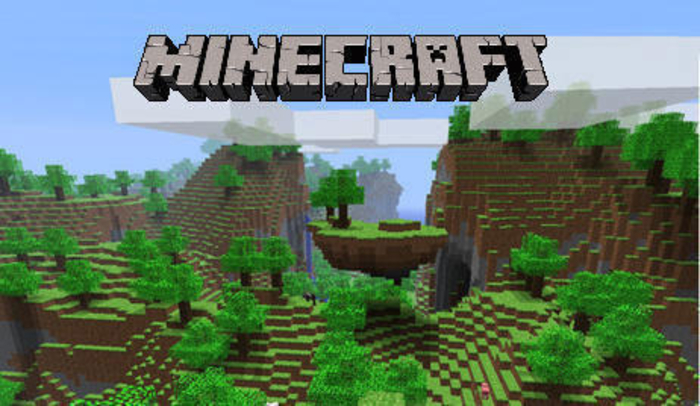In the course of play, I couldn't help but think about the awesome learning potential of this game. One idea that struck me especially, is that Minecraft is perfect for exploring the volume of rectangular prisms. Since, the entire world of Minecraft is basically made out of 1x1x1 cubes like these, they are perfect for building rectangular prisms!
Here's What I Did
1. I built a world in Minecraft Pocket Edition on my iPad. I used creative mode so that we could fill prisms without worrying about our resources. The world contained FOUR different empty rectangular prisms. I lined each with a fence so that I wouldn't fall in while teaching. Here's one:
2. I created a chart for students to record their findings. It looked like this:
3. I situated this lesson as a transition between working with actual cubes, and thinking abstractly. I designed the activity to more clearly demonstrate the relationship between length, height, and width. We had already done a few days of working with physical blocks, so some students had already started to make these connections.
4. During the lesson we focused on the concept of layers. First, I used blocks to fill in the base. Be sure to choose blocks that have clear boundaries. Some, like soil and stone, blend when placed side-by-side. Here's the first layer of the first prism. I used iron blocks.
5. I projected my iPad for this lesson so that we counted aloud each block as it was placed. We made the connection of l x w to determine the area of the base, the first layer. You can also see in the image above that the extra block shows that we only need one more layer to fill the prism. Many students, then, simply added layer 1 + layer 1 to get the total number of blocks.
6. As we moved on to the other three prisms in the world, I stripped away the support of counting the blocks. By the last prism, we simply placed blocks along the edges of the base and then determined the height. This process made the expression l x w x h quite obvious to my students.
And of course, they couldn't stop talking about how AWESOME it was to use Minecraft in math!
~ Amanda

UPDATE 6/30/2014 - I've had to turn off comments on this post due to the enormous number of spam comments (nearly 100 per day). It's a popular post for regular folks like us, so I guess that makes it attractive to spammers. Needless to say, if you would like to leave a comment, they are enabled on every other post on the blog so go to it or you can use the Email Me from the button at the top of the page =)




.PNG)
Absolutely love this idea Amanda!! I've been avoiding Minecraft simply because I know I could get addicted and don't have the time but now... well... I will just have to find a way to control myself. Thanks for sharing. Can't wait to give it a try.
ReplyDeleteHeather
http://www.stimulatingsciencesimulations.blogspot.com/